Daniele
Posts: 1812
Joined: 2/7/2015
Status: offline

|
Naval System Operations
Most naval battles occurred within a very short span of time over long distances. Simulating this on the WarPlan scale of 2 weeks is a difficult task. Consider the map following the Bismarck and the Prince Eugen. This whole engagement took just 1 week from the day the left port to the day the battleship was sunk. It took half the British navy to find her at sea. Another example is the Japanese attack on Pearl Harbor. The movement and attack on Pearl Harbor took 11 days crossing ~140 hexes WarPlan hexes of map distance. The complexities of recreating realistic scenarios are a challenge to say the least.
Naval systems for wargames are one of the most complex systems to create. Some games tackle this with sea zones, others with hexes. It is difficult to get naval battle results at a reasonable level without too little or too much damage. I remember from my youth playing SPI’s European Theatre of Operations in which they have individual capital ships with smaller groups. It was very exciting at the time to have a game like this. It used a hex movement system to position fleets where you wanted. The problem was combat took too long and was incredibly bloody not to mention the mountain of naval counters.
Other games like World in Flames use a zone system which works really well and flows very nicely using search boxes to find the opponent. Even the casualty level seems about right. The issues with this system is that it groups too many distant locations close together allowing for land based air to control the flow of the a sea zone. For example the Marshall Islands are in the same area as Hawaii and Midway. In reality all these 3 island groups are incredible far apart. Games like Hearts of Iron did a good job of putting sea areas on a smaller scale. This was a consideration I had for WarPlan but I didn’t want to mix sea areas with hexes. War in the Pacific uses hexes for everything. It tracks fleets as the move using search planes, pre-assigned missions, air groups, and weather. It gives a very realistic feeling to the game. The issue here is these actions take a long time and the game is on a much different scale than WarPlan with a lot of detail. The turns are much shorter time lengths in War in the Pacific. With a single theatre which focuses primary on the Pacific this works well for the level of detail the game is at. But this would be too much for WarPlan and the simple to play concept. My conclusion was that I had to take the best of each system and incorporate it into something at a larger scale that can abstractly represent the reality of naval combat. The naval system took a very long time to develop and test but what resulted I believe was something very elegant that has a lot of depth into it.
I took the concept of hex positioning, fleet stacks, and screening from EToO.
I took the zone concept, and importance of land based air from WIF.
I took searching, deception, and detection levels from WitP.
All of this was combined to form hex based movement, detection based on controlled land, operational range positioning to counter the enemy within an area, and deception. The fog of war element that comes with WarPlan works very well with the naval system because it is based on incomplete information.
The naval scale for WarPlan is 5 different types of naval groups consisting of….
Carrier Group = 2 large aircraft carriers or a mix of smaller aircraft carriers with 150 – 200 combat aircraft.
Battle group: 2 battleships/battle cruisers + support ships
Cruiser group: 4-6 heavy cruisers + escorts
Patrol group: 4-6 light cruisers + escorts or a destroyer patrol
Sub group: 10-15 active submarines out at any one time
2 convoy groups…
Escorts – 6-8 frigates, escorts, and corvettes for trade routes
Merchant Marine – cargo ships ferrying resources
There are two military unit transport types…
Transport – Each point carries one strength.
Landing Craft – A unit needs 1 landing craft per strength to invade.
And the oiler unit which resupplies fleets at sea.
So practically for navies on the map in 1939 some of the major countries have….
Germany has 5 naval groups and 2 sub groups
Italy has 7 naval groups and 4 sub groups
The United Kingdom has 18 naval groups and 2 sub groups
This allows for plenty of strategy, planning, and action without overwhelming the player. Each country also comes with their pool of escorts, transports, oilers, and landing craft. So now I have a decent scale of navies set up for the game. Next I had to incorporate a naval system within the 2 week game turn time frame that avoided moves from the other player as a reaction. I asked what do navies do?
#1 Invade an area
#2 Support an invasion or area
#3 Engage the enemy
#4 Protect supply in an area
#5 Attack a supply lane
#6 Convoy attacks
All these scenarios except #6 always take place near land, with few exceptions, and involved conflict naturally due to some other action going on. The key to getting players to engage was giving importance to controlling the sea. The solution was the following…
All fleets have 3 levels of unit supply so they can stay out a sea for a while.
Supply Oilers are available to replenish fleets at sea if it runs low.
A fleet has 2 operation points.
A fleet can move 24 hexes per operation point.
It takes an operation point to perform an action such as moving, invading, or attacking.
I implemented a reconnaissance system within the game based on how close you were to territory you controlled. Enemy fleets close to your controlled territory are easy to find. Enemy fleets away from your territory are harder to find. Two fleets in the middle of the Atlantic Ocean have a small chance of finding each other. The Hunt for the Bismarck demonstrated what it took to find 2 ships at sea. To my recollection that was the only time fleets fought in the deep sea away from any land mass in World War 2. You just didn’t have fleet combat in the middle of nowhere out in the ocean except in convoy warfare. So if naval combat was to be mostly fought over sea control near land what would it exactly control? The answer was air space, supply, and invasions.
Air Space and Supply
Overseas supply is limited depending on port sizes and how close a unit is to a port supply stockpile. Supply can be interdicted and escorted just by being within 4 hexes of the target port by naval units and 8 hex or less by air units. So it is important to keep an air unit in Malta as the Allies and keep air units in the central Mediterranean as the Axis.
Night Missions
I also introduced night missions into the game. Fleets can perform night missions within 6 hexes of their position as long as they start the turn in a port with full operation points. Night missions reduce recon levels and make the fleet immune to air attack. With night missions players may still try to engage enemy fleets with surface combat. The inspiration for night missions came from the destroyer supply runs of the Tokyo Express in the Pacific.
Zones of Interception
The operation point system gives players the option to move twice, attack twice (rare), move and attack, or attack and move. A player could set his fleet up to move and attack on their turn as long as they were within 24 hexes of the areas they want to protect. They can instead move long distances going a full 48 hexes but can’t attack another fleet. This means positioning in the Mediterranean is important. Keeping the Italian fleet at Trieste to protect it from British carriers means you can’t move and fight. While placing it at Taranto allows you to move and attack while leaving you vulnerable to a British move and attack from a carrier force. Scapa flow is an excellent place to port fleets to intercept German raiders coming out of Kiel. But as the German player you can move up the coast or Norway to port in Narvik and move out from there. With operation points and recon levels naval warfare becomes a game of cat and mouse in the European theater.
Naval Groups and Fleets
Groups are a formation of support ships around larger ships. Fleets are a stack of groups in one hex. Any number of naval groups may be in a port of any size. Fleets out at sea are limited to 9 groups with 3 carrier groups maximum. Submarine groups and naval groups may not stack together at sea. Groups are automatically resupplied when they are in port. Groups automatically repair 1 strength per turn in ports size 5 or higher.
Surface naval groups have 3 attributes that determine how well they do in surface naval combat…
Strength – how many hits they can take
Defense – the ability to resist hits
Surface – the ability to inflict hits
Carrier groups are the only groups that act as an air unit. Carrier groups come with a separate air strength component of 10. Air strength is repaired as the carrier group is repaired. The cost of a carrier’s air strength is part of its repair cost. Carrier groups can do all the missions that a land based air unit can do.
Submarine groups are unique among the surface naval groups. Although weak in surface combat they have a range of 5 to attack fleets compared to a range of 1 for patrol, cruiser, and battle groups. This represents the ability of the sub to cover an area, shadow a fleet, and call for reinforcements. Sub groups also have a chance to surprise another fleet when they attack. Sub fleets may not be attacked by surface fleets when in and surrounded by all ocean hexes. A player can place a submarine fleet in an area and get 2 attacks off at an enemy fleet within its 5 range. Submarine fleets involved in combat also have better targeting than surface fleets.
Note: minor countries, Soviet, and Italian submarines -1 surface for submarines
Attacking Ports
Surface fleets and submarine fleets can attack other navies in port. Every port comes with defenses of naval guns, minefields, and spotters. The larger the port the more defenses it has. The largest size 9 port has 3x the defenses of the smallest port. The defenses open fire on enemy ships trying to attack the ships in port. Ships in port that reduced to zero strength have a good chance of just bottoming out in port and not sinking staying at one strength point. Ports provide repair (size 5 or higher), supply, and protection. I wanted to give ports importance in the game.
Fleet or Raid Mode
Fleets may be placed in two different modes. Fleet mode is normal mode that allows fleets to attack other fleets and perform actions. Raid mode puts the fleet into evasion mode and they can’t initiate attacks or invasions but they have a lower reconnaissance level at sea. This mode is primarily used by transport fleets not wanting to be found, subs, and raiders.
Invasion Support
Fleets can supply and provide offshore bombardment for invasions offensively or defensively. A fleet in a hex with a land unit will support it the land unit in the hex vs attack and when it attacks. A fleet can supply its hex and the 6 hexes around it with limited supply. This is all part of the sea control incentive that operates within the naval system. Large invasions vs tough defenses have to be carefully planned to succeed. This was a challenge when designing the A.I. for the game as that is the hardest thing for an A.I. to do.
Surface Naval Combat
One of the more predominant features of the naval combat system is target selection and critical hits. In surface combat non-capital groups tend to take the damage. In a carrier attacks the capital groups tend to take the damage. To better simulate the randomness of naval combat I introduced a critical hit model to the game. Any hit can increase up to triple in damage during a combat. Combined with luck and a missed defense check it is possible for a patrol group to beat a battle group, although incredibly rare. This really adds flavor to the game, a little excitement, and unpredictability. It also makes it important to have a more balanced fleet when entering combat to absorb losses.
In surface combat surface damage is simply exchanged with checks to critical hits vs defense and targeting is fairly spread out between all the ships with some luck involved.
Land Based Air or Carrier Fleet vs Carrier Fleet Combat
In any form of air to sea combat only air factors vs anti air factors are used. CV fleet vs CV fleet exchange air attacks and resolve the combat using naval air factors. The sequence is that any air strength points attacking a fleet are subject to being shot down by part of the carrier force’s fighter part of their compliment then anti-air guns. Once air strength points survive this they can proceed to try and do damage to the opposing fleet. In air to sea combat attacks are focused primarily on carrier groups, then battle groups, cruiser groups, and other groups in that order. While these seems to be a lot of complication in how air to sea resolves under the hood players just need to worry about their fleet strengths, positioning, and composition.
Submarine vs ships
Submarine combat is slightly different that normal surface combat. Submarines are primarily used to attack convoy lanes. They are fairly weak in surface combat but have several advantages. Submarine fleets have a chance to attack an enemy fleet before they attack back. They also target capital ships more than other ships during combat. If a fleet has a carrier or battle group which is less than 50% strength there is a very high chance that till be the attacker’s target. It is important to escort fleets with patrol groups. Submarines can only be attacked by carrier or air units if they are in an all sea hex surrounded by all sea hexes. If submarine fleets are near a coast any fleet can attack them. This represents submarines getting too close to shallow water and operating in too close of an area that it is easier to find them.
Convoy System
This is the easiest part of the naval system. Resources are automatically shipped across trading lanes using merchant marine. Players may place escorts in these lanes via the trade menu. Enemy players may place sub fleets in the lanes. It automatically calculates the Battle of the Atlantic for you. Choosing how to fight the naval strategic warfare is positioning and composition.
The tricky part was measuring out to balance escorts and convoys. Reading Michael Gannon’s great book Black May gave me excellent insight into how to make it work and give players decision points in the strategic warfare aspect of the game without it becoming tedious. In the book it details that mostly tactics and formations were the critical element in protecting convoys with a specific number of escorts. Anymore would be a waste, any less leave a hole in the defense. So this is approached two fold.
1 escort can protect 10 merchant marine at optimal capability.
A maximum of 10 escorts can defend vs a convoy attack but a player may put more than 10 escorts in a lane.
Escorts in a lane can defend the convoy vs any number of convoy attacks.
At the start of the 1939 scenario the United Kingdom will be faced with a decision as each of their convoy lanes feeds into others. They don’t have enough escorts to fully protect all the lanes. They have to decide if they want to maximize capability to protect all lanes vs maximizing capacity to protect few convoy lane. Later in the war when France falls and close sub bases to the Atlantic similar choices will have to be made again. As for the Axis their choices will change. Early on, or if the Allies do not build enough escorts, they might approach a strategy of spreading out their submarines to different convoy lanes. Later in the war when escorts have completely protected convoy lanes and Allied escort advancements are impacting submarine fleet strengths at an alarming rate it might be more prudent to concentrate sub fleets to spread damage out and focus on one convoy lane. On top of all this players must consider what naval assets they want to buy as they are limited by the number of shipyards in use they have.
This creates a very simply system to use while giving the players control over how to use it without spending a lot of time on the mouse.
A great deal of testing was put in to make sure this is a balanced system. Fleets shouldn’t get destroyed too fast or be impossible to kill. The critical hit system puts a healthy dose of anxiety and excitement that no fleet is ever 100% safe. I wanted players to have some planning in fleet organization and a chance to deceive the enemy. I also had to put some limitations to balance it all out while incorporating the realism of managing a large task force at sea. The system was also developed to take into consideration the Pacific Theatre for future release.
< Message edited by Daniele -- 7/8/2019 9:00:39 AM >
|
 Printable Version
Printable Version


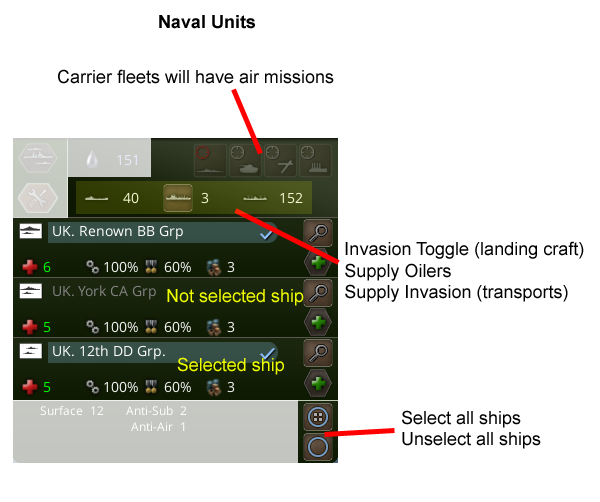









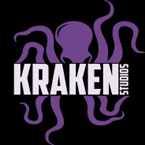
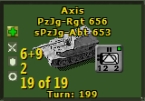
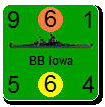
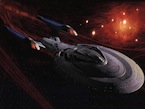


 New Messages
New Messages No New Messages
No New Messages Hot Topic w/ New Messages
Hot Topic w/ New Messages Hot Topic w/o New Messages
Hot Topic w/o New Messages Locked w/ New Messages
Locked w/ New Messages Locked w/o New Messages
Locked w/o New Messages Post New Thread
Post New Thread